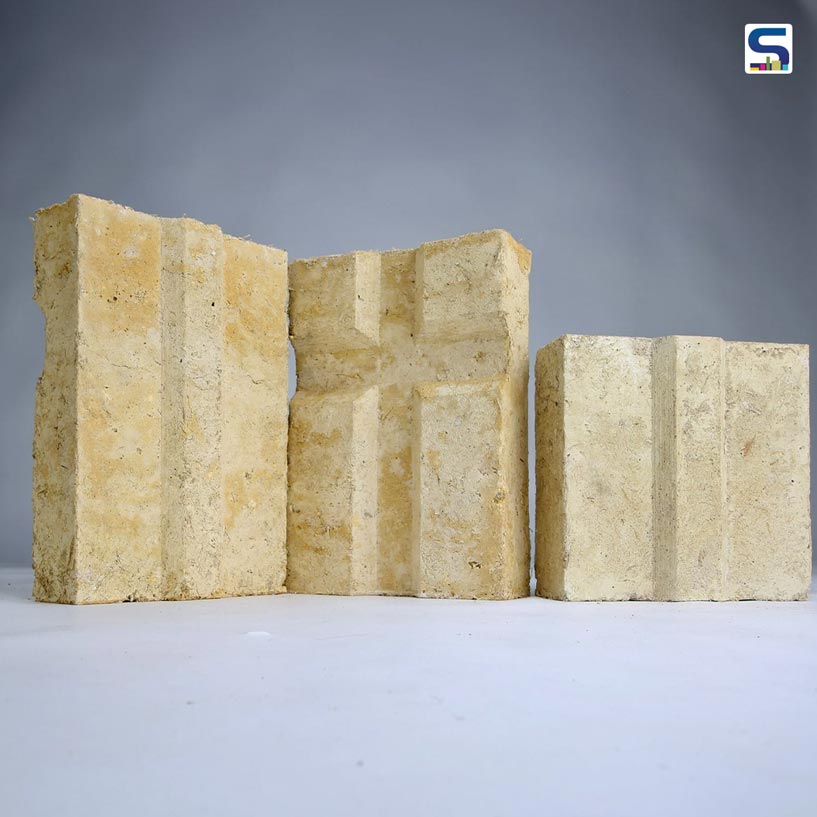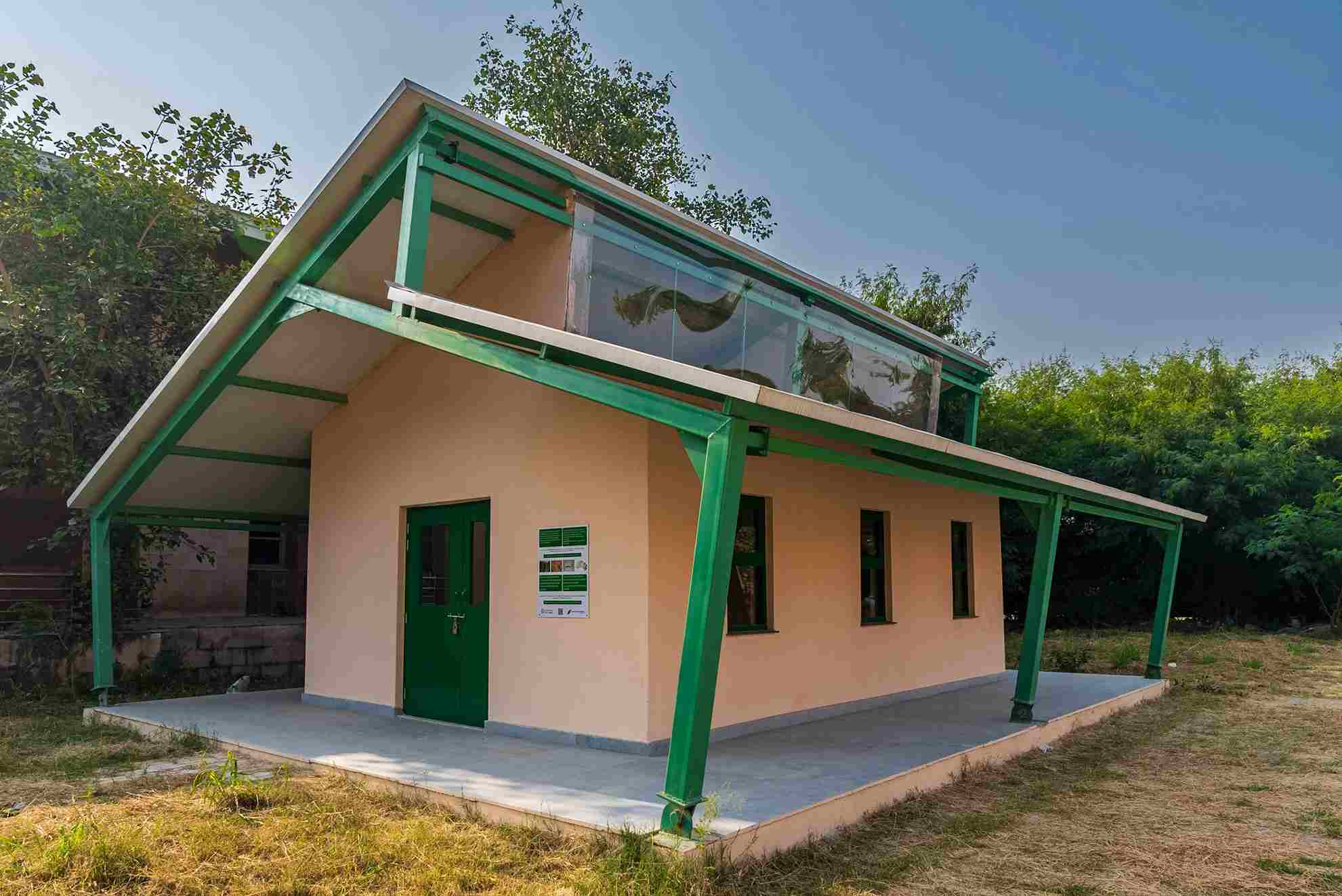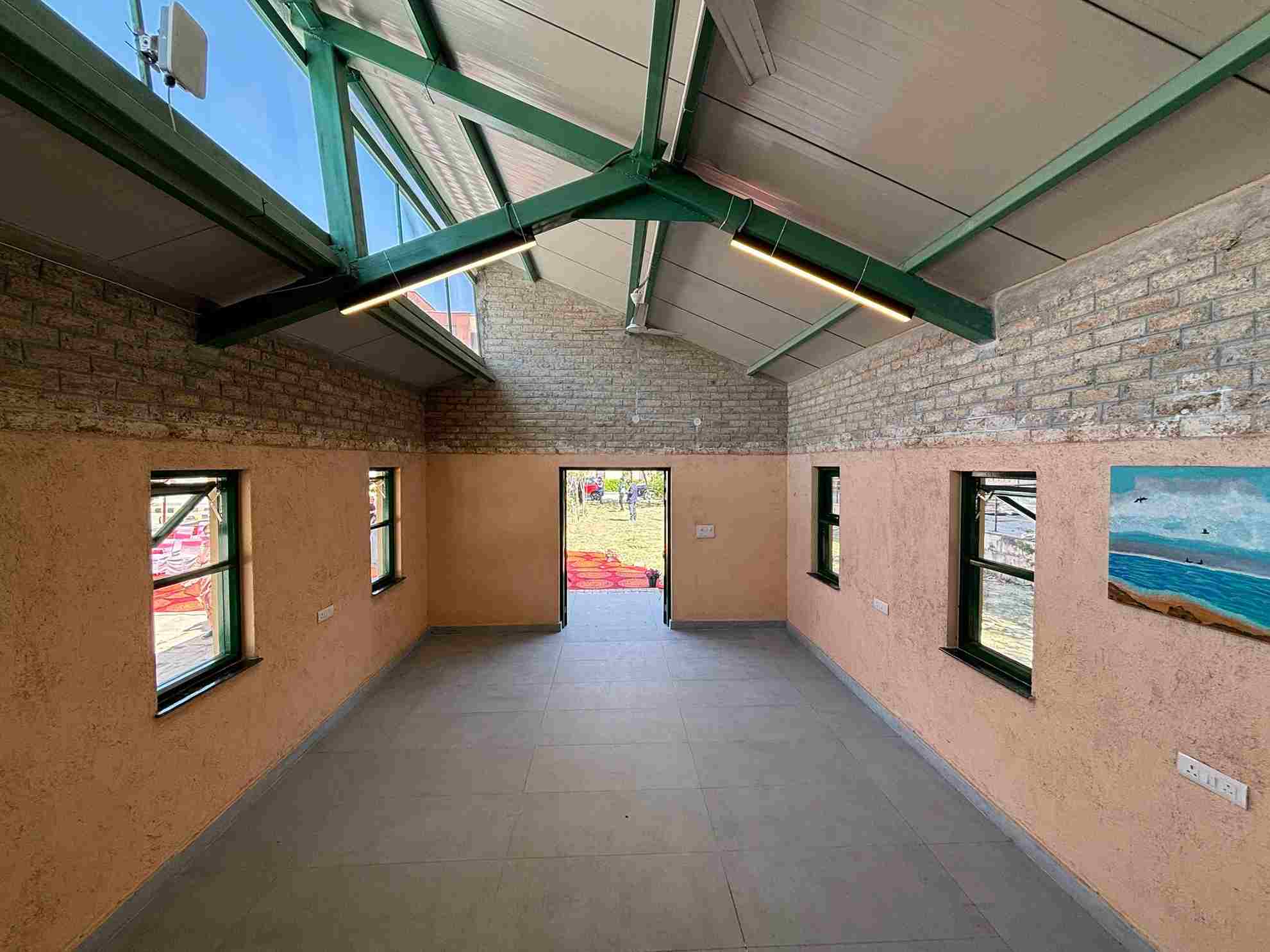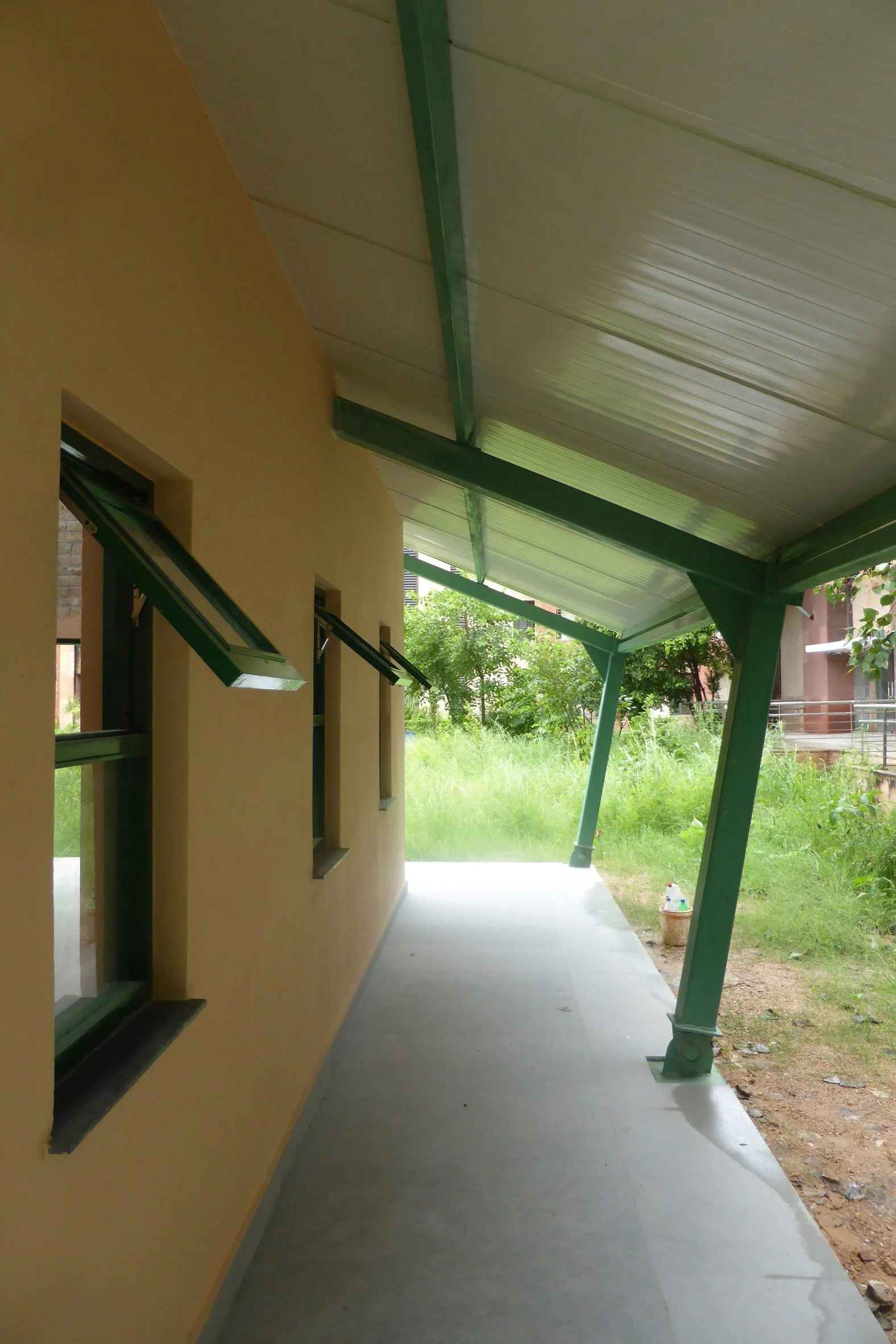
In a groundbreaking initiative that merges sustainable innovation with community upliftment, staff and students from the University of East London (UEL) have constructed a pioneering classroom in Noida, India, using an eco-friendly building material called Sugarcrete. This newly developed biomaterial is crafted from bagasse, the fibrous residue left behind after sugarcane juice extraction, and has the potential to transform construction in hot climates with its low carbon footprint and efficient thermal properties. Know how this Sugarcrete model offers a compelling glimpse into the future of low-impact, community-driven architecture on SURFACES REPORTER (SR).

To manufacture the Sugarcrete blocks, the team partnered with Indian firm Chemical Systems Technologies, which produced the modular units used in the Noida classroom.
Bagasse to Bricks
Located at Panchsheel Balak Inter College, the classroom marks the first-ever built structure made entirely from Sugarcrete, offering both educational utility and a real-world demonstration of the material’s possibilities. Developed in 2023 by researchers at UEL, Sugarcrete is formed by combining sugarcane waste with mineral binders to create interlocking blocks. These blocks are designed not only to be structurally sound and easy to assemble but also significantly more sustainable. According to UEL, the carbon emissions involved in producing Sugarcrete are six times lower than those associated with traditional fired clay bricks.

Located at Panchsheel Balak Inter College, the classroom marks the first-ever built structure made entirely from Sugarcrete, offering both educational utility and a real-world demonstration of the material’s possibilities.
The project had been led by Alan Chandler, associate at UEL’s Sustainability Research Institute, and Armor Gutierrez Rivas, a senior lecturer at the university. Gutierrez Rivas also collaborated closely with postgraduate architecture students to make the initiative an immersive academic and practical experience.
Building the Future
To manufacture the Sugarcrete blocks, the team partnered with Indian firm Chemical Systems Technologies, which produced the modular units used in the Noida classroom. These blocks were assembled atop a concrete foundation slab and joined together using lime mortar, reinforcing both durability and eco-compatibility. While the external facade was finished with render to withstand weather conditions, the interior walls were partly treated with clay plaster, adding to the natural insulation and tactile aesthetic of the space.

The classroom also incorporates a green-painted steel frame that supports a distinctive angular roof, integrating a clerestory window to bring in soft natural north light and encourage high-level ventilation.
The classroom also incorporates a green-painted steel frame that supports a distinctive angular roof, integrating a clerestory window to bring in soft natural north light and encourage high-level ventilation. This thoughtful roof design does more than just enhance indoor comfort. It also includes a veranda, which becomes particularly useful during the monsoon season by protecting the walls from intense rainfall and giving students sheltered outdoor space.

These blocks were assembled atop a concrete foundation slab and joined together using lime mortar, reinforcing both durability and eco-compatibility.
Functioning as both a classroom and a community skill development hub, the building has been designed to be thermally efficient and acoustically insulated, addressing the climatic demands of the region. For the architects, Sugarcrete is more than just an alternative material. It represents a low-carbon, inclusive development system that delivers not only environmental benefits but also social impact. In collaboration with local stakeholders, Chandler and Gutierrez Rivas are reportedly engaged in constructing a second Sugarcrete-based school in Hisar, India, in partnership with the Paryatan Foundation, an educational non-profit. While the project has validated the material’s usability and effectiveness, it has also revealed challenges, such as sourcing materials and skilled labour for lime-based finishes.
Image credit: Megan Jones